It comes as no surprise that swimming is a full-body workout. The movements in the water help to stay fit and active while improving cardiovascular functioning. The buoyancy of water also provides support for recovery from injuries and protects joints, unlike other exercises. The best part is that swimming is also accessible to obese people who may otherwise find it difficult to exercise.
There are many health benefits to swimming and building muscle is definitely one such benefit. Swimming exercises different muscle groups in the body and can contribute to gains based on which muscle group is being worked on. Numerous swimming strokes exist and each puts a focus on a different muscle group, helping with the development of muscle mass.
Generally, the following are the muscle groups that are put to work when you swim:
- Chest
- Back muscles
- Abdomen
- Gluteal muscles
- Forearm muscles
- Shoulder muscles
Let’s take a deeper look at exactly how swimming builds muscle mass and what you can do to benefit from it.
Contents
Swimming offers a means of resistance training
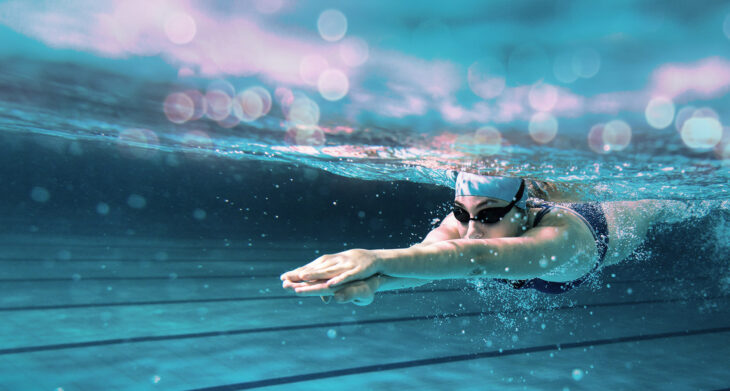
img source: bandcaquatics.com
When you exercise, the muscles in your body tear and stretch. It sounds pretty painful, but this is actually a normal process in the body. Once you’ve finished your exercise, there’s a recovery period where the body will begin to heal itself and repair the tears experienced. Muscle mass is generally built when your body is in the recovery stage after training.
Swimming acts as a means of resistance training. When you swim, your body has to work against the water’s resistance or force to get from one point of the swimming pool to another. This causes the muscles in the body to stretch and tear, which necessitates a recovery period. As your muscles recover from swimming, muscle mass is built. Because water has a density that’s greater than air, you’ll be able to build muscle mass more quickly through swimming than what would be possible through other traditional methods of exercise that involve cardio such as jogging.
The strokes involved while swimming against the force of water not only builds muscle mass, but also improve muscle endurance. The strain on joints is also minimal due to the buoyancy offered by water. This will help you work towards your physical fitness goals and remain active throughout life.
Building muscle mass with different strokes
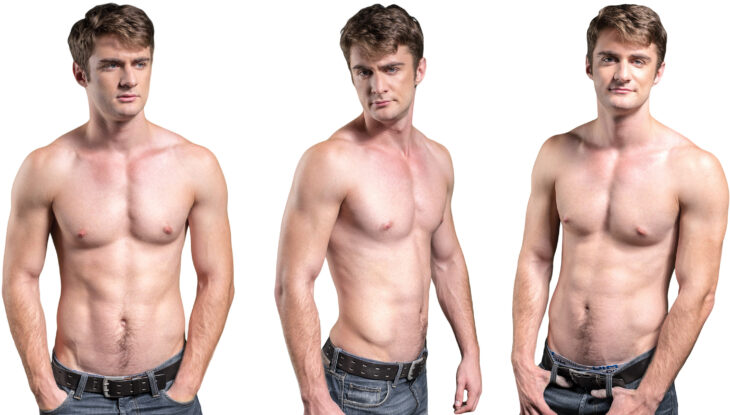
img source: website-files.com
Swimming doesn’t work on all muscles in the same way. There are a variety of strokes that one can use to swim and each works on different muscle groups in the body to build muscle mass. Here’s a guide on the strokes and muscle groups they work.
Backstroke
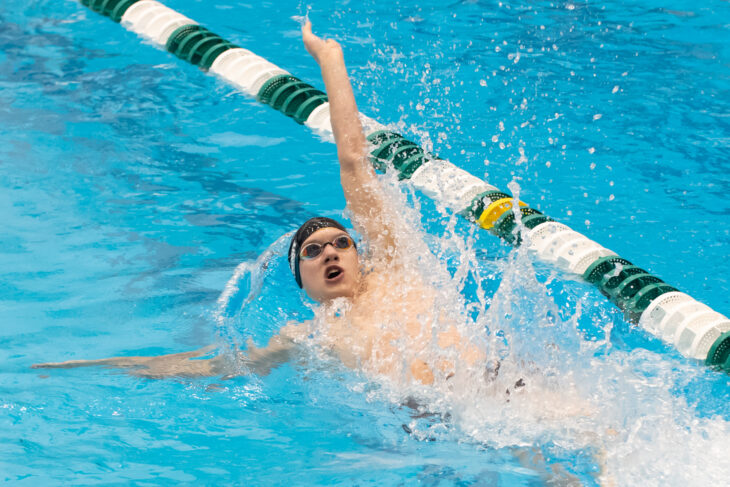
img source: swimlikeafish.org
The backstroke works the Latissimus Dorsi muscles, which connect the upper extremities of the body and the vertebral column. General human movement is impacted by these muscles and your back can get a toned look thanks to these muscles. This stroke also focuses on outer and inner abdominal muscles, hip flexors, hamstrings, and lower body muscles.
Breaststroke
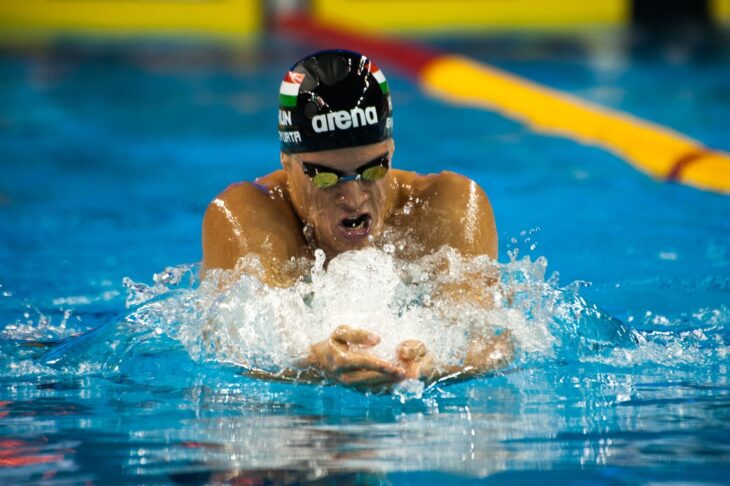
img source: swimswam.com
This is a great stroke to work your thigh muscles and build larger as well as stronger thighs. Other muscle groups that also get a good workout with the breaststroke are:
- Hamstrings
- Quadriceps
- Gluteal muscles
- Pectoral muscles
- Upper arm and shoulder muscles, including deltoids, triceps, and biceps
Butterfly
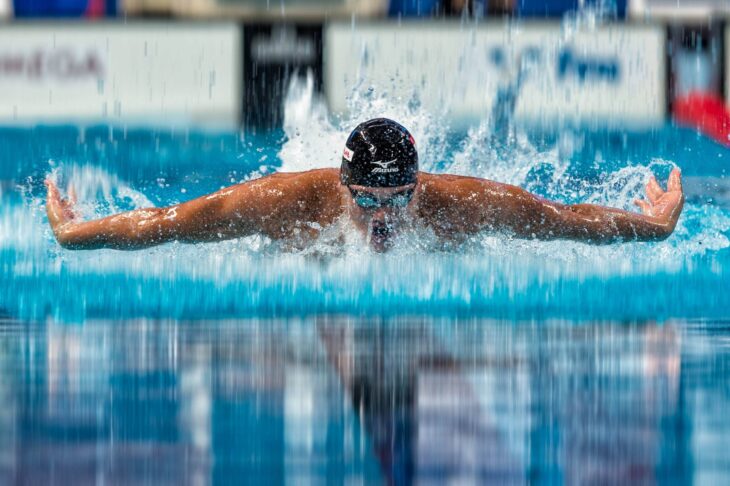
img source: swimswam.com
The butterfly stroke is especially helpful if you want to build muscle mass in the chest and abdominal portions of the body. It’s also a great option if you want to see changes that engage gluteal muscles, the lower back, and arm and shoulder muscles.
Freestyle
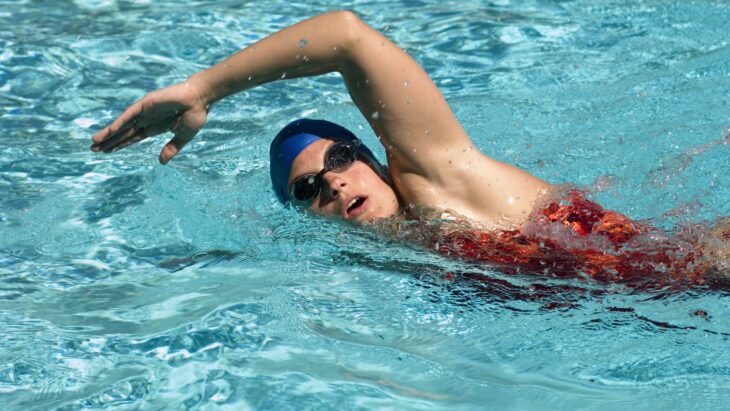
img source: liveabout.com
Toning of the biceps and triceps can be done through freestyle swimming. Freestyle is also a good way to strengthen back muscles, the torso region, and the abdomen region. Extended crawl arm movements involved in freestyle swimming help to engage the deltoid and shoulder muscles. You can also engage the hip flexors and foot muscles in the lower body with the flutter kick movements of this stroke.
To work on different muscle groups in the body, make use of different strokes when you’re swimming. Swimming for at least 30 – 45 minutes on 5 days of the week will make building muscle mass easier for you and help you make long-lasting changes. Lasting longer in a session will result in the building of more muscle mass in the recovery period.
Some pointers to build muscle mass through swimming
- Change your routine up
- Your muscles need to experience something new so that they can adapt to it. Spread your swimming sessions over different days and commit to swimming using different strokes on different days so that you’re not focusing on the same muscle group each day. You should also try to reduce the time taken to complete laps because this makes it more intense on your body, helping you build more muscle during recovery.
Be consistent
If you want to see results and ensure long term change, you need to be consistent with your swimming routine. You’re not going to get toned in a day. Make sure you swim at least 5 times a week for a minimum of 30 or 45 minutes if you want to experience real change. Being disciplined and maintaining a routine is necessary to make lasting changes.
Focus on your arms and legs separately
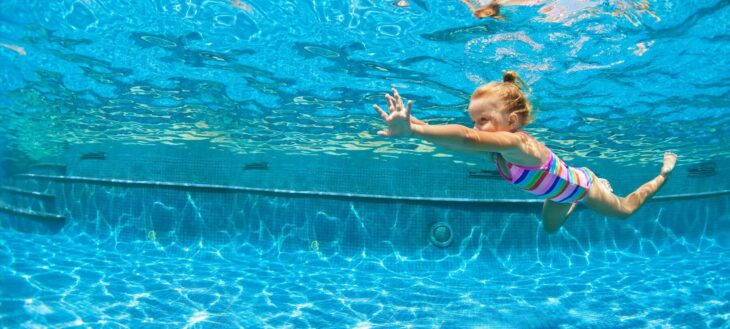
img source: asppoolco.com
If you were to train in a regular gym, you’d probably have different days dedicated to working on the arms and legs. This is also necessary when you’re trying to build muscle through swimming. Use a kickboard for your arms to hold up so that the focus is on your legs moving you forward. This way, your core is engaged and you can work on your central muscles better. You can use a pull buoy for your arms to get a good workout.
Pay attention to your diet
A big chunk of getting healthy is that nutrition we put into our bodies and the same applies when trying to build muscle through swimming. You must ensure that you eat a balanced meal that contains healthy proteins and carbohydrate sources so that you have the energy you need to swim. If you want to see changes in your body, it’s best to avoid or minimize the intake of processed foods as well as refined sugars.
Don’t neglect strength training
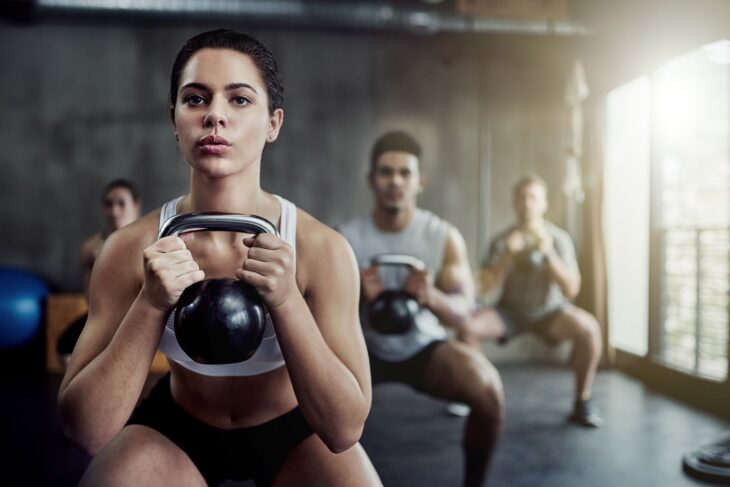
img source: hearstapps.com
Complement your swimming sessions and work on building muscle mass more quickly through strength training. You don’t have to lift weights at the gym for this. You can even carry light weights or water dumbbells and get in a good workout in the swimming pool.
Companies such as FibreglassPoolsMelbourne specialize in award-winning fiberglass pools and have pools to suit every home and lifestyle. For more information, visit their website and get a suitable pool for you and your family.
